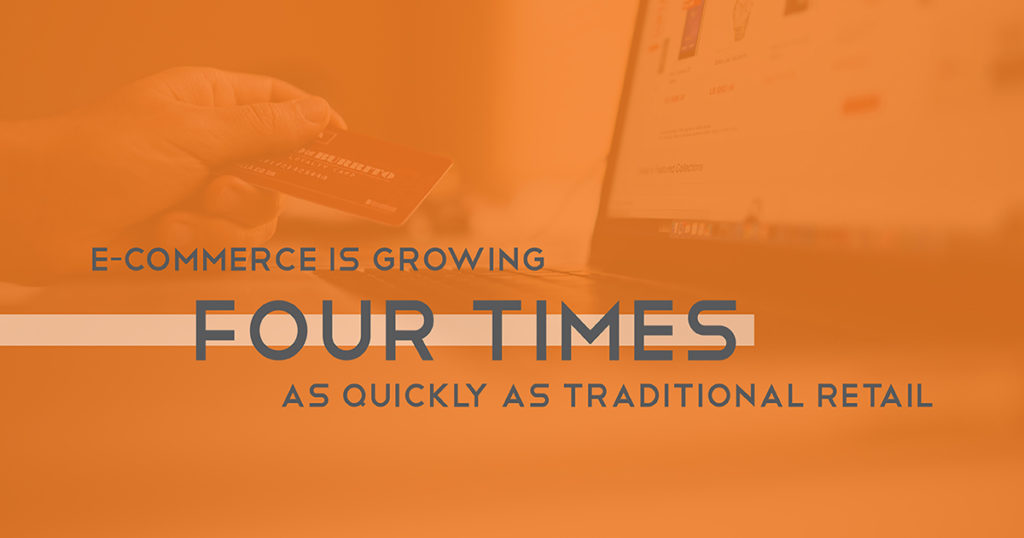E-commerce is growing four times as quickly as traditional retail, and it’s constantly changing. The increase in e-commerce can be attributed to many changes in the technology industry and the way customers shop. Not surprisingly, many individuals would rather purchase items online and avoid the worries of shopping in-person.
This translates into the global value of e-commerce sales forecast for 2019 is expected to reach $3.5 trillion.
With more customers shopping online and having packages shipped directly to their homes, the logistics industry is certainly feeling this growth. With increases of purchases online, the U.S. Department of Transportation projects that by 2040, U.S. annual freight volume will increase by 45% to 29 billion tons.
At TOC, we see that e-commerce is not only common amongst business-to-consumer transactions, but also business-to-business and consumer-to-consumer. Regardless of the buyer and seller transaction, customers have high expectations for their package deliveries. Customers often expect tracking features, reliability, and speedy delivery on all e-commerce purchases.
The International Air Transport Association (IATA) reports, “E-commerce growth is the not-to-be-missed opportunity,” and we could not agree more. Results on this growth will include:
Advances in Technology
One of the biggest changes e-commerce has created for the logistics industry is the need for advancements in technology to keep up with consumers demands. Shoppers want to know when their packages are being shipped, and track them throughout the shipping process. This will force the shipping industry to update technology to provide updates to packages every step of the way.
Reduced Lead Time
Companies are working to reduce lead times in e-commerce shipping. Consumers are searching for and expecting speedy delivery on all e-commerce purchases. One notable company that is affecting the supply chain industry with e-commerce is retail giant Amazon. Amazon is making continuous improvements to take control of their shipping by entering the logistics industry, and reducing costs and improving delivery times.
Increase in Truck Drivers
As the demand for goods increases, so does the demand for truck drivers. According to the Bureau of Labor Statistics, employment of heavy and tractor-trailer drivers is projected to grow 6 percent from 2016 to 2026. We know that the amount of goods shipped from e-commerce purchases is increasing, so the trucking industry will look to hire more truck drivers to deliver products.
Due to evolving expectations from e-commerce customers, changes are needed in the supply chain and logistics industry to keep up – and that’s where we come in. Our talented team is planning today for the needs of tomorrow by constantly monitoring changing trends.

